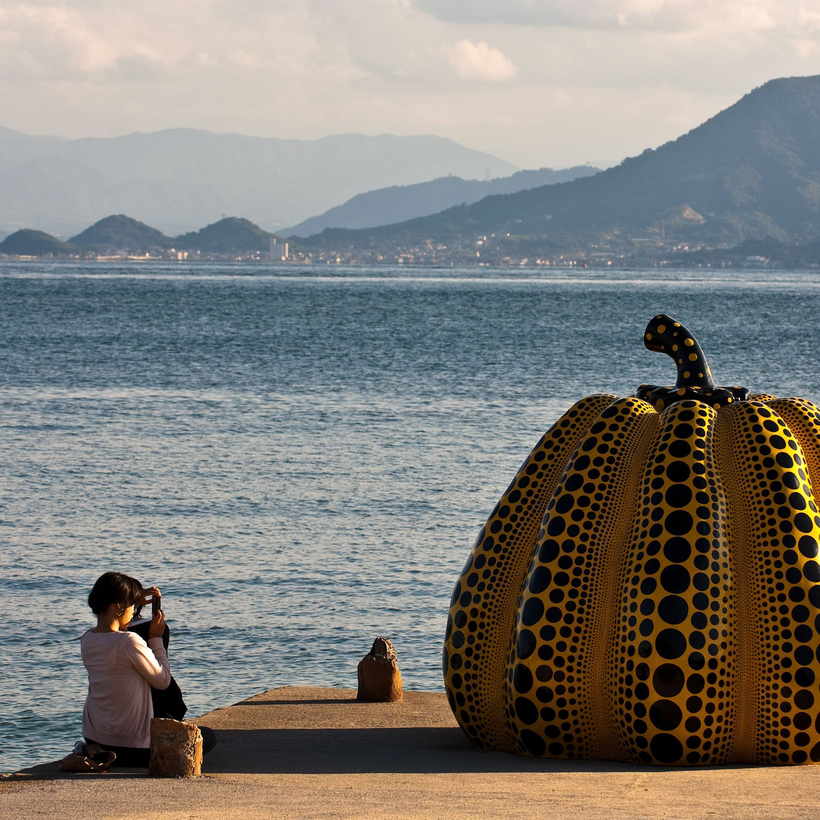Certain circles may murmur about “Japan’s art island,” or “Japan’s Ando island”—they’re referring to Naoshima, an off-the-radar destination that will be appreciated by any connoisseur of art and architecture. Less than six square miles in size, it’s a small island in Japan’s Seto Inland Sea, and it was put on the map only around 30 years ago after a portion of the island was purchased by the billionaire art enthusiast Soichiro Fukutake.
It was Fukutake who enlisted the help of renowned architect and Pritzker-prize recipient Tadao Ando, who began to shape the island’s craggy coastlines and green lawns by constructing underground galleries, art museums, and a hotel. Ando favors sleek lines, concrete tunnels, and expertly angled light sources that tie together the artwork and the island’s natural surroundings.

Home to the Chichu Art, Benesse, and Ando museums, the permanent collections in Naoshima include masterpieces by the likes of Claude Monet, James Turrell, and Walter De Maria. Sculptural works are scattered around the island with the same frequency as one might expect to encounter a park bench. A leisurely bike ride, the preferred mode of transportation, will casually bring you into intimate contact with Yayoi Kusama’s celebrated Pumpkin. (It is decidedly not the Kusama pumpkin that, in 2017, was fraudulently sold for $1.4 million by Angela Gulbenkian to a Hong Kong art consultant but never materialized. It does look similar, though.)
The island’s restaurants include a French affair decorated with pieces from Michelangelo Pistoletto’s “Affrescos” series and a traditional Japanese restaurant that is lined with an array of Warhols. For those who want to overnight in the presence of greatness, stay in the museum rooms of the Ando-designed Benesse House, and enjoy after-hours access to the exhibitions. Why not finish off dinner with a nightcap and a Turrell?


